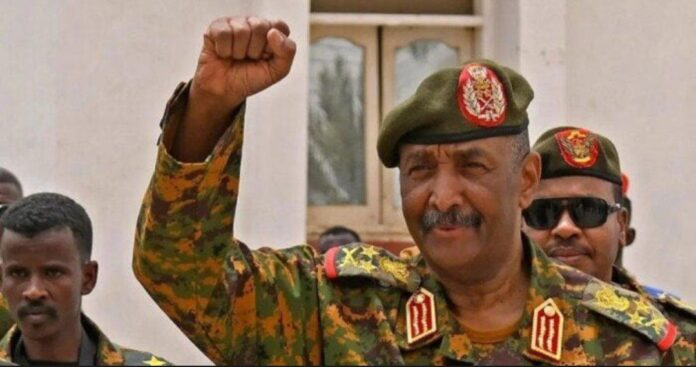Policy paper summary by: Zaelnoon Suliman – Progress Center for Policies
Introduction:
Sudan has witnessed a significant escalation following General Abdel Fattah al-Burhan’s declaration of general mobilization and his call for all able-bodied Sudanese to join the fight against the Rapid Support Forces (RSF). The speech coincided with new statements by U.S. Secretary of State Marco Rubio, who held the RSF responsible for widespread violations—an indication the Sudanese Armed Forces (SAF) interpreted as a major shift in Washington’s stance.
This represents a turning point in the structure of the conflict, highlighting the army’s desire to consolidate a new equation: excluding any political settlement and embracing military victory as the sole viable option. This paper analyzes the drivers behind this shift, its political, military, and social implications, and the potential future trajectory of the war.
- Understanding Al-Burhan’s Speech and the General Mobilization Decree:
-Eliminating the Prospect of a Political Settlement
Al-Burhan stated that the war will not end through ceasefires or agreements, but only through the total defeat of the RSF. This signals the army’s withdrawal from negotiation tracks led by regional and international actors.
-Transition from a Limited Military Conflict to a Nationwide People’s War
Calling on “anyone capable of bearing arms” marks a shift from conventional warfare to mass mobilization—reflecting either manpower shortages or an attempt to broaden the attrition against the RSF.
-Countering International Pressure
The speech rejects any external efforts—especially American—to impose a ceasefire. Al-Burhan sought to assert that the army will not accept solutions that contradict its vision. - Impact of the New U.S. Position on the Army’s Calculations
Rubio’s comments were perceived by the Sudanese military as:
-A shift from “implicit neutrality” to a tougher stance toward the RSF—giving SAF a sense of informal international backing.
-A political cover that allows the army to escalate operations without fearing U.S. pressure.
-An opportunity to secure more regional support, particularly from Egypt, Turkey, and Gulf states, by arguing that the international moment favors backing the army over the RSF. Internal Consequences of the General Mobilization
The mobilization order carries deep social and political ramifications:
-Expansion of recruitment and weaponization, potentially including tribal and local groups - risking a multi-layered armed conflict.
-Strengthening the military’s dominance over the state and weakening any civilian political trajectory.
Wider geographic spread of the war and increased humanitarian suffering, displacement, and human lossRegional and International Implications
Al-Burhan’s discourse seeks to achieve several objectives:
Reassuring regional allies (Egypt, Turkey, Gulf states) that the army remains the most viable force for future stability.
Deterring the RSF by projecting readiness for a long war.
Attracting indirect international support by framing the war as essential to preserving state integrity.
Key Conclusions:
Al-Burhan’s speech aims to reassure regional allies and solidify their support by projecting confidence in the army’s ability to maintain control. The mobilization decree marks a radical strategic shift, signaling a move away from political settlement toward open-ended confrontation.
The declaration reveals a real manpower crisis within the army, indicating clear exhaustion due to the prolonged conflict. While the U.S. shift strengthens Al-Burhan politically, it does not guarantee full American support, making overreliance on it risky.
The war is expected to become more violent and geographically expansive, with popular recruitment and community armament leading to deeper fragmentation. The absence of a political solution shows that the war has become a long-term strategic choice, especially for the army—accelerating state erosion and social disintegration.
Understanding this shift requires continuous monitoring of regional and international positions, and of the army’s real capacity to execute a “decisive victory” strategy in a conflict shaped by unprecedented military, social, political, and regional complexities.


